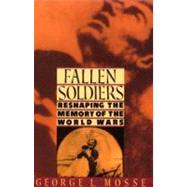
Note: Supplemental materials are not guaranteed with Rental or Used book purchases.
Purchase Benefits
What is included with this book?
| Acknowledgments | p. v |
| Introduction: a Different Kind of War | p. 3 |
| The Foundations | p. 13 |
| Volunteers in War | p. 15 |
| Building the Myth: Tangible Symbols of Death | p. 34 |
| The First World War | p. 51 |
| Youth and the War Experience | p. 53 |
| The Cult of the Fallen Soldier | p. 70 |
| The Appropriation of Nature | p. 107 |
| Process of Trivialization | p. 126 |
| The Postwar Age | p. 157 |
| The Brutalization of German Politics | p. 159 |
| Building on War | p. 182 |
| The Second World War, the Myth, and the Postwar Generation | p. 201 |
| Notes | p. 227 |
| Index | p. 252 |
| Table of Contents provided by Publisher. All Rights Reserved. |
The New copy of this book will include any supplemental materials advertised. Please check the title of the book to determine if it should include any access cards, study guides, lab manuals, CDs, etc.
The Used, Rental and eBook copies of this book are not guaranteed to include any supplemental materials. Typically, only the book itself is included. This is true even if the title states it includes any access cards, study guides, lab manuals, CDs, etc.